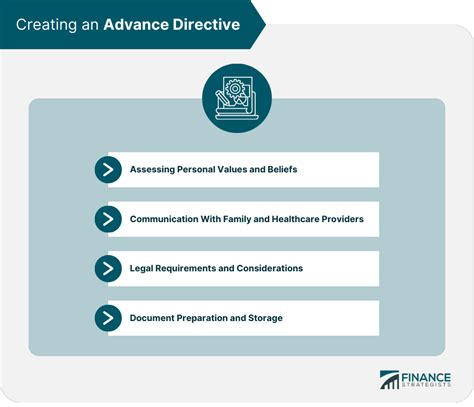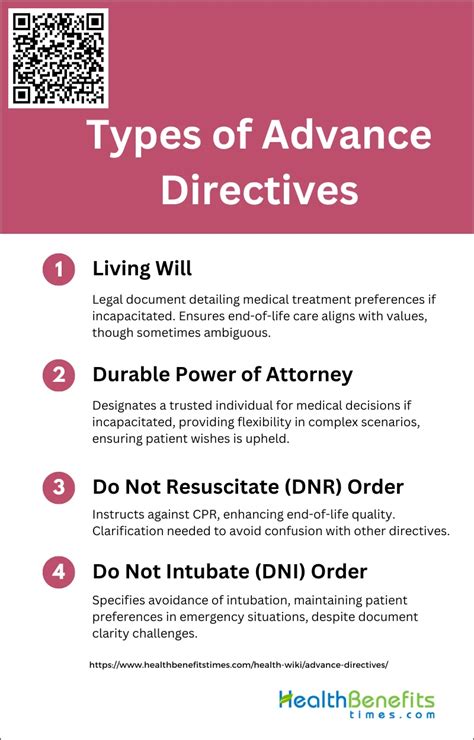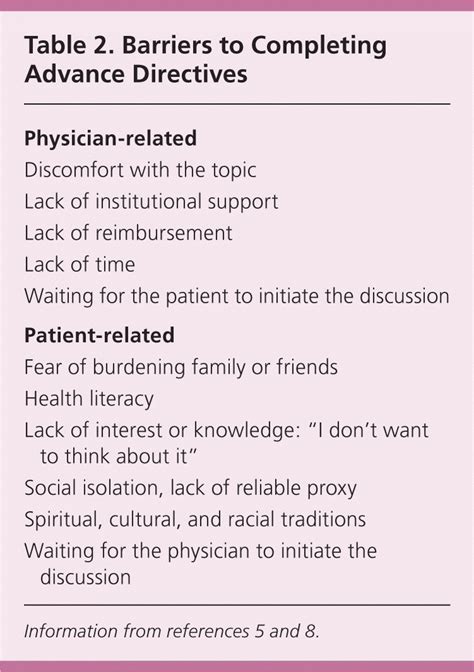Intro
Discover the ultimate guide to Advance Directive Forms, including living wills, healthcare proxies, and end-of-life care planning, to ensure your medical wishes are respected with informed consent and patient autonomy.
As people age or face serious health issues, they often worry about losing control over their medical care and treatment. This concern is completely understandable, given the complexity and personal nature of healthcare decisions. One way to ensure that an individual's wishes are respected, even when they cannot communicate, is through the use of advance directive forms. These documents allow individuals to specify their preferences for medical treatment in advance, providing peace of mind for both the patient and their loved ones. Understanding the role and importance of advance directive forms is crucial for anyone looking to take control of their healthcare future.
The concept of advance care planning is not new, but it has gained significant attention in recent years due to its importance in patient-centered care. Advance directives are a key component of this planning process, serving as a legal document that outlines a person's wishes regarding their medical treatment if they become unable to make decisions for themselves. This can include decisions about life-sustaining treatments, pain management, and other medical interventions. By having these documents in place, individuals can ensure that their healthcare providers and family members understand and respect their wishes, even in difficult or uncertain situations.
The process of creating advance directive forms involves several steps, including understanding the types of directives available, discussing wishes with family and healthcare providers, and completing the necessary legal documents. It is essential for individuals to approach this process thoughtfully, considering their personal values, beliefs, and preferences regarding medical treatment. This thoughtful approach not only helps in creating directives that accurately reflect an individual's wishes but also facilitates open and honest communication with loved ones and healthcare professionals. Open communication is key to ensuring that everyone involved in an individual's care is aware of and supports their advance directives.
Understanding Advance Directives

Advance directives come in several forms, each serving a specific purpose in the advance care planning process. The most common types include living wills, durable powers of attorney for healthcare, and do-not-resuscitate (DNR) orders. A living will is a document that outlines the medical treatments an individual does or does not want to receive if they become incapacitated. This can include decisions about ventilators, dialysis, and feeding tubes, among other life-sustaining treatments. On the other hand, a durable power of attorney for healthcare appoints a person to make medical decisions on behalf of the individual if they are unable to do so themselves. This person, often referred to as a healthcare proxy or agent, is responsible for ensuring that the individual's wishes, as outlined in their living will or otherwise communicated, are respected.
Types of Advance Directives
Understanding the different types of advance directives is crucial for creating a comprehensive advance care plan. Each type of directive serves a unique purpose and can be used alone or in combination with other directives to ensure that an individual's healthcare wishes are fully expressed and respected. For instance, a DNR order is a specific type of advance directive that instructs healthcare providers not to perform CPR if an individual's heart stops or if they stop breathing. This type of order is typically completed by individuals who have a terminal illness or who are at high risk of cardiac arrest and do not wish to receive CPR.Creating Advance Directive Forms

The process of creating advance directive forms begins with understanding the laws and regulations governing these documents in one's state or country. Advance directive laws can vary significantly, affecting what types of directives are recognized, how they must be witnessed or notarized, and when they go into effect. Once individuals have a clear understanding of the legal requirements, they can begin drafting their directives. This often involves using pre-printed forms that are specifically designed for one's jurisdiction, although some individuals may choose to work with an attorney to create customized documents.
Discussing Wishes with Family and Healthcare Providers
Discussing one's wishes with family members and healthcare providers is an essential step in the advance care planning process. Open and honest communication helps ensure that everyone involved in an individual's care is aware of and supports their advance directives. This communication can also help prevent conflicts that may arise if family members or healthcare providers are unsure about an individual's wishes. By talking about their preferences for medical treatment, individuals can provide their loved ones with the guidance and reassurance they need to make difficult decisions, should the need arise.Benefits of Advance Directives

The benefits of advance directives are numerous and significant. Perhaps most importantly, they provide individuals with a means of controlling their medical care, even when they are unable to communicate. This can offer peace of mind, both for the individual and their family members, knowing that their wishes will be respected. Advance directives also help reduce the burden on family members who might otherwise be left to make difficult decisions without clear guidance. Furthermore, having advance directives in place can help prevent unnecessary medical interventions that are not aligned with an individual's values or preferences.
Common Misconceptions About Advance Directives
There are several common misconceptions about advance directives that can discourage individuals from creating these important documents. One misconception is that advance directives are only for older adults or those with serious illnesses. However, anyone over the age of 18 can benefit from having advance directives, as unexpected accidents or illnesses can happen to anyone. Another misconception is that once advance directives are completed, they cannot be changed. In reality, individuals can update or revoke their directives at any time, as long as they are capable of making decisions.Implementing Advance Directives in Healthcare Settings

The implementation of advance directives in healthcare settings is critical to ensuring that an individual's wishes are respected. Healthcare providers have a legal and ethical obligation to follow a patient's advance directives, as long as they are aware of the documents and they comply with state laws. To facilitate this, individuals should provide copies of their advance directives to their healthcare providers and ensure that the documents are included in their medical records. This way, in the event of an emergency or when decisions need to be made about their care, healthcare providers can refer to the advance directives and make decisions that align with the individual's wishes.
Challenges in Implementing Advance Directives
Despite the importance of advance directives, there are challenges in their implementation. One of the main challenges is ensuring that healthcare providers are aware of and have access to a patient's advance directives at the point of care. This can be particularly difficult in emergency situations or when care is being provided in a setting that does not have access to the patient's full medical records. Another challenge is the variability in how advance directives are interpreted and respected across different healthcare settings and providers.FAQs About Advance Directives

What is an advance directive?
+An advance directive is a document that outlines a person's wishes regarding their medical treatment if they become unable to make decisions for themselves.
Why are advance directives important?
+Advance directives are important because they allow individuals to control their medical care and ensure that their wishes are respected, even if they cannot communicate.
How do I create an advance directive?
+To create an advance directive, you should understand the laws in your state, use pre-printed forms or work with an attorney, discuss your wishes with family and healthcare providers, and ensure your documents are properly witnessed or notarized.
Conclusion and Next Steps

In conclusion, advance directive forms are a powerful tool that allows individuals to take control of their healthcare, ensuring that their wishes are respected even when they cannot communicate. By understanding the importance of advance directives, the types available, and the process of creating them, individuals can make informed decisions about their medical care. It is essential for everyone, regardless of age or health status, to consider advance care planning and to discuss their wishes with family members and healthcare providers. Taking these steps can provide peace of mind and help ensure that an individual's autonomy and dignity are preserved throughout their healthcare journey.
We invite you to share your thoughts and experiences with advance directives in the comments below. Have you or a loved one created advance directive forms? What challenges or benefits have you encountered in this process? Your insights can help others understand the importance and practicalities of advance care planning. Additionally, consider sharing this article with friends and family to encourage them to take control of their healthcare future. Together, we can promote a culture that values patient-centered care and respects the autonomy of individuals in making decisions about their own health.
